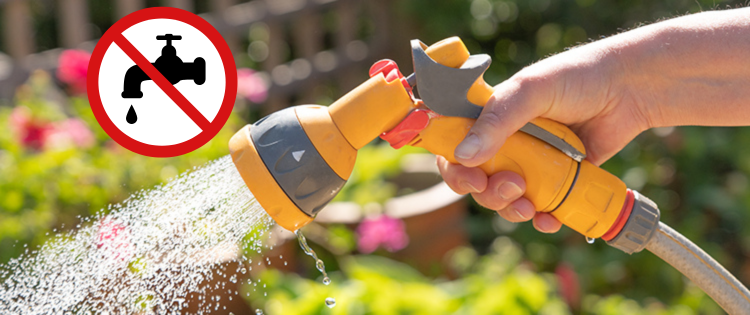A water ban, also known as a water restriction or water rationing, is a measure implemented by authorities or water management agencies to limit or restrict water usage in a particular area or during a specific period of time. It is usually enacted during times of water scarcity, drought, or other circumstances where the water supply is significantly reduced.
A water ban typically involves regulations and guidelines that restrict certain activities that consume a significant amount of water, such as watering lawns or gardens, filling swimming pools, washing cars, or using water for non-essential purposes. The goal of a water ban is to conserve water and ensure that the available supply is prioritized for essential needs like drinking, sanitation, and firefighting.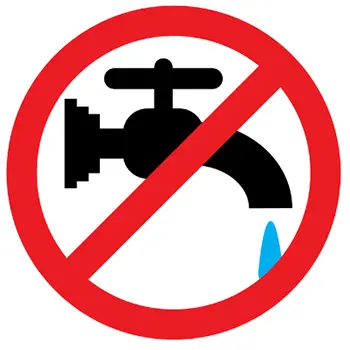
Water bans can vary in severity and duration. In some cases, they may be voluntary, where individuals and businesses are encouraged to reduce their water usage voluntarily. In more severe cases, mandatory water bans may be enforced by law, and violations can result in fines or penalties.
Related: Are You Ready for a Long-Term Water Emergency?
The specific details of a water ban can vary depending on the location and the severity of the water shortage. It is essential for residents and businesses to adhere to the regulations and guidelines provided by local authorities during a water ban to help conserve water and ensure the sustainable use of this vital resource.
Perhaps your local area has been struck with a drought. That, or your local water company is having problems getting enough water for everyone using their sources. This is becoming a more common problem these days than in days long past. Here I’ll concentrate on these two subjects; because when water is in short supply, your precious garden is usually one of the first things to go. Let’s get started.
Growing With Less
It’s impossible to keep a garden green without water. If you have an absolutely strict drought warning and watering ban, you may have to 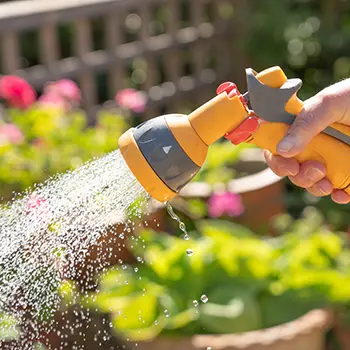 actually pay to truck in water. This can cost thousands upon thousands of dollars depending on the area you live in. It can also cause you to have to store a giant water tank on your property and, possibly, have to pay for insurance to do that.
actually pay to truck in water. This can cost thousands upon thousands of dollars depending on the area you live in. It can also cause you to have to store a giant water tank on your property and, possibly, have to pay for insurance to do that.
Needless to say, I don’t recommend it.
However, you can grow with a lower impact. This may sound a little gross, but if you are allowed to take a shower daily, we strongly recommend just rinsing off every other day and fully bathing on the days in between. For instance, if you would take a shower every day, simply skip the soap and shampoo, say, on Tuesday, Thursday, and Saturday. On those days, block your tub up (or stand in a large, waterproof container) and harvest the water you’re using in your soapless shower.
There are other soaps and shampoos that are fine for gardens, too, though they are often costly and may not work for all skin types, so we won’t recommend specific ones here. If you can harvest this water, store it in large buckets or troughs outside and use it to fill your individual watering cans.
Native Plants And Their Yields
Depending on your area, you may be able to get away with native plants (or those that are certainly more native than the ones we commonly see on shelves) and what they can do for your soil. Or in your soil, for that matter.
If you’re gardening specifically to get fruits and vegetables, well, you may be a little bit stuck on that if you live in the high desert in Arizona. You may be able to grow prickly pears and a handful of other things (such as aloes), but you probably won’t be growing water-guzzling watermelons no matter what you do during drought and water-ban situations.
My advice here? Outsmart the weather guy and plant as close to native fruiting and vegetable plants as you can. The more they’re like the plants in your area, the more likely they will be drought-resistant and ready to put up a fight before the sun steals the last few bits of moisture from their leaves.
Non-Typical Drought Areas
Speaking as someone who has largely lived in tropical to sub-tropical climates all her life, it is a little surprising when the weatherman on the television suddenly tells us that we’re experiencing a drought. With the advent of climate change and the shifting weather patterns, we see it more and more often these days. Especially when you start looking at the long, hot summers.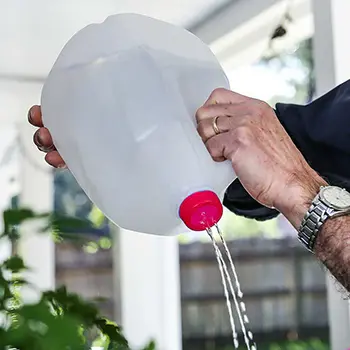
Sure, there are downpours and huge storms, but they often soak areas aggressively and then the heat tries to steam your plants to death. They go in the steamer after they’re picked, Mother Nature, not before.
If you’re in an area that doesn’t often experience drought, you may be finding yourself at odd ends when you find out there’s a watering restriction in effect. Our suggestion? Shade cloth, heavy landscaping fiber/wood chips, and hope. Most of the time, if there is a water restriction in this area, things are very dire. You really cannot get away with sneaking extra water out of the tap or your well without seriously damaging the situation.
You can also try jugging your plants. This involves taking a 1-gallon water jug (ironically enough) and cutting out the top and bottom. You seat the jug near the base of the plant and it, hopefully, catches enough moisture in the air that it trickles down the sides and offers the condensation up as a quick, easy-to-establish drinking system. This should only be done in absolutely end-of-life circumstances for your garden since jugging can cause serious ill effects like root rot if not watched very carefully.
Rain Water And What You Can Do With It
In a lot of areas, you cannot legally collect rainwater. This is because rainwater goes back through the ground (or into drainage areas) and into ponds, lakes, rivers, and streams that help with your community’s water supply.
That said, if you are in a rural area and have a small 1-5 gallon bucket outside, few people are going to say anything if it just so happens to catch several gallons of water during the next big rainstorm.
Ultimately, it’s about limiting your uptake of potential groundwater that people may want to use to get profits from and to otherwise use in your community. It’s doable to collect, it’s just risky. Look into your local county laws before you decide that you want to try to collect it.
Related: H2O Dynamo: This Awesome Device Turns Air Into Fresh Water
Also, keep in mind that not all sources of rainwater are clean. There are a lot of nasty things in rain water these days and checking with local laws and guidelines will help you sort out if you need to further filter the water that you do gather.
Now that you’ve heard us out on keeping your garden green during the worst droughts, we’d like to hear from you! Have you been stuck in a never-ending drought and still managed to get melons and tomatoes that rocked your world? Or have you lost entire gardens during water restriction and learned a trick or two that you’d like to share with everyone else? Maybe even something that we didn’t cover in this article. Leave a comment down below and, as always, Happy Gardening!
You may also like:
Is It Legal To Harvest Rainwater In Your State?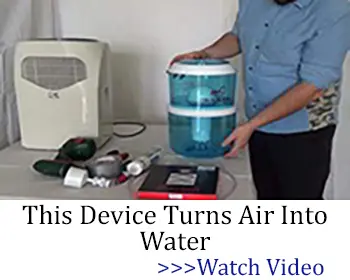
This Homemade Device Can Power Up Your Entire House 7 Days in a Row (Video)
10 Off-Grid Water Systems You Should Have On Your Property
Easy DIY Water Purification System For Under $20
If You See This Jumping Worm In Your Garden, Kill It Immediately!

